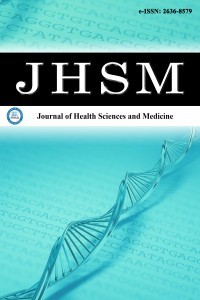1.
Sung H, Ferlay J, Siegel RL, et al. Global cancer statistics 2020: GLOBOCAN estimates of incidence and mortality worldwide for 36 cancers in 185 countries. <em>CA Cancer J Clin.</em> 2021;71(3):209-249. doi:10.3322/caac.21660
2.
Nesvold IL, Reinertsen KV, Fosså SD, Dahl AA. The relation between arm/shoulder problems and quality of life in breast cancer survivors: a cross-sectional and longitudinal study. <em>J Cancer Surviv.</em> 2011;5(1):62-72.
3.
Mortimer PS. The pathophysiology of lymphedema. <em>Cancer. </em>1998;83(12):2798-2802.
4.
Shen A, Lu Q, Fu X, et al. Risk factors of unilateral breast cancer-related lymphedema: an updated systematic review and meta-analysis of 84 cohort studies. <em>Support Care Cancer.</em> 2022;31(1):18.
5.
Burwinkle T, Robinson JP, Turk DC. Fear of movement: factor structure of the Tampa Scale of kinesiophobia in patients with fibromyalgia syndrome. <em>J Pain.</em> 2005;6(6):384-391.
6.
Courneya KS, Mackey JR, Jones LW. Coping with cancer: can exercise help?. <em>Physic Sportsmed.</em> 2000;28(5):49-73.
7.
Hair BY, Hayes S, Tse CK, Bell MB, Olshan AF. Racial differences in physical activity among breast cancer survivors: implications for breast cancer care. <em>Cancer.</em> 2014;120(14):2174-2182.
8.
Kwan ML, Sternfeld B, Ergas IJ, et al. Change in physical activity during active treatment in a prospective study of breast cancer survivors. <em>Breast Cancer Res Treat.</em> 2012;131(2):679-690.
9.
Erdoğanoğlu Y, Çalık M, Vural M. Functional evaluation of patients with mastectomy lymphedema. <em>Turk J Phys Med Rehabil.</em> 2021;67(1):56-61.
10.
Miller RP, Kori SH, Todd DD. The Tampa Scale: a measure of kinisophobia. <em>Clin J Pain.</em> 1991;7(1): p.51.
11.
Norton PJ, Klenck SC, Barrera TL. Sudden gains during cognitive-behavioral group therapy for anxiety disorders. <em>J Anxiety Disord.</em> 2010;24(8):p.887-892.
12.
Çayır M, Durutürk NA, Tekindal MA. Validity and reliability of the Turkish adaptation of the Kinesiophobia Causes Scale. <em>J Exercise Therapy Rehabil.</em> 2020;7(1):p.64-73.
13.
Saulicz M, Saulicz E, Knapik A, et al. Impact of physical activity and fitness on the level of kinesiophobia in women of perimenopausal age. <em>Menopause Rev Przeglad Menopauzalny. </em>2016;15(2):104-111.
14.
Gencay Can A, Can SS, Ekşioğlu E, Çakcı FA. Is kinesiophobia associated with lymphedema, upper extremity function, and psychological morbidity in breast cancer survivors?. <em>Turk J Phys Med Rehabil.</em> 2019;65(2):139-146.
15.
Witte MH, Bernas MJ. Evolution of the 2020 international society of lymphology consensus document parallels advances in lymphology: an historical perspective. <em>Lymphology. </em>2020;53(1):1-2.
16.
Aaronson NK, Ahmedzai S, Bergman B, et al. The European Organization for Research and Treatment of Cancer QLQ-C30: a quality-of-life instrument for use in international clinical trials in oncology. <em>J Nat Canc Instit.</em> 1993;85(5):365-376.
17.
Düger T, Yakut E, Öksüz Ç, et al. Kol, omuz ve el sorunları anketi Türkçe uyarlamasının güvenirliği ve geçerliği. <em>Fizyoter Rehabil.</em> 2006;17(3):99-107.
18.
Vlaeyen JW, Kole-Snijders AM, Boeren RG, Van Eek H. Fear of movement/(re) injury in chronic low back pain and its relation to behavioral performance. <em>Pain.</em> 1995;62(3):363-372.
19.
Velthuis MJ, Van den Bussche E, May AM, Gijsen BC, Nijs S, Vlaeyen JW. Fear of movement in cancer survivors: validation of the Modified Tampa Scale of Kinesiophobia-Fatigue. <em>Psycho Oncol.</em> 2012;21(7):762-770.
20.
Kocjan J, Knapik A. Barriers of physical activity (kinesiophobia) in patients subjected to cardiac rehabilitation. <em>Baltic J Health Phys Activity.</em> 2014;6(4):7.
21.
Malchrowicz-Mosko E, Nowaczyk P, Wasiewicz J, et al. The level of kinesiophobia in breast cancer women undergoing surgical treatment. <em>Front Oncol.</em> 2023;13:1010315.
22.
Karadibak D, Yavuzsen T, Saydam S. Prospective trial of intensive decongestive physiotherapy for upper extremity lymphedema. <em>J Surg Oncol.</em> 2008;97(7):572-577.
23.
Silvera SA, Jain M, Howe GR, Miller AB, Rohan TE. Energy balance and breast cancer risk: a prospective cohort study. <em>Breast Cancer Res Treat.</em> 2006;97(1):97-106.
24.
Schünemann, H. and N. Willich, Lymphedema after breast carcinoma. A study of 5868 cases. <em>Dtsch Med Wochenschr. </em>1997;122(17):536-541.
25.
Park, J.E., H.J. Jang, and K.S. Seo, Quality of life, upper extremity function and the effect of lymphedema treatment in breast cancer related lymphedema patients. <em>Ann Rehabil Med. </em>2012;36(2):240-247.
26.
Smoot B, Wong J, Cooper B, et al. Upper extremity impairments in women with or without lymphedema following breast cancer treatment. <em>J Cancer Surviv.</em> 2010;4(2): 167-178.
27.
Johansson K, Ingvar C, Albertsson M, Ekdahl C. Arm lymphoedema, shoulder mobility and muscle strength after breast cancer treatment? A prospective 2-year study. <em>Adv Physiother.</em> 2001;3(2):55-66.
28.
Dawes D, Meterissian S, Goldberg M, Mayo N. Impact of lymphoedema on arm function and health-related quality of life in women following breast cancer surgery. <em>J Rehabil Med. </em>2008; 40(8):651-658.
29.
Altuğ F, Ünal A, Kilavuz G, Kavlak E, Çitişli V, Cavlak U. Investigation of the relationship between kinesiophobia, physical activity level and quality of life in patients with chronic low back pain 1. <em>J Back Musculoskelet Rehabil.</em> 2016;29(3):527-531.

